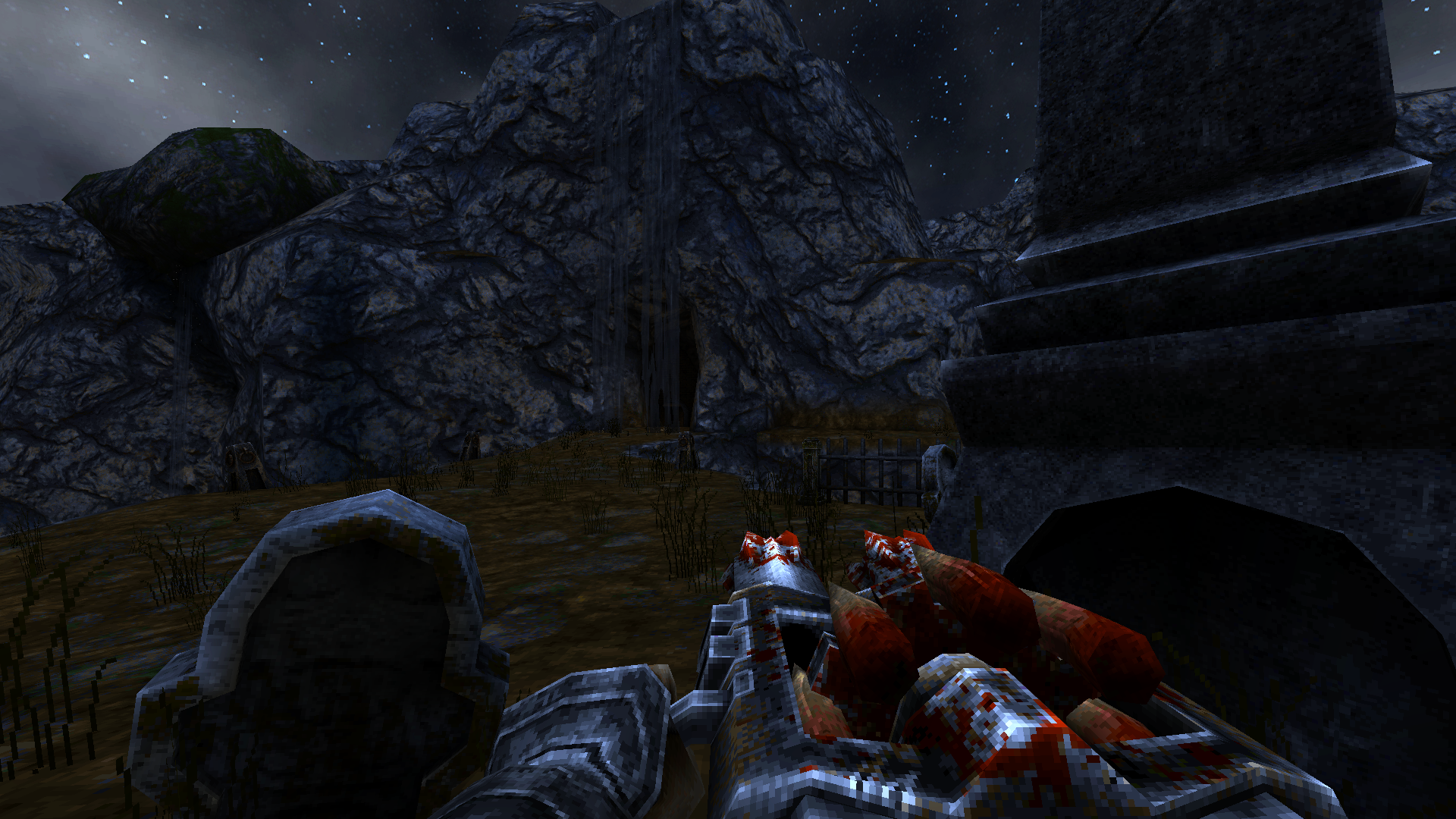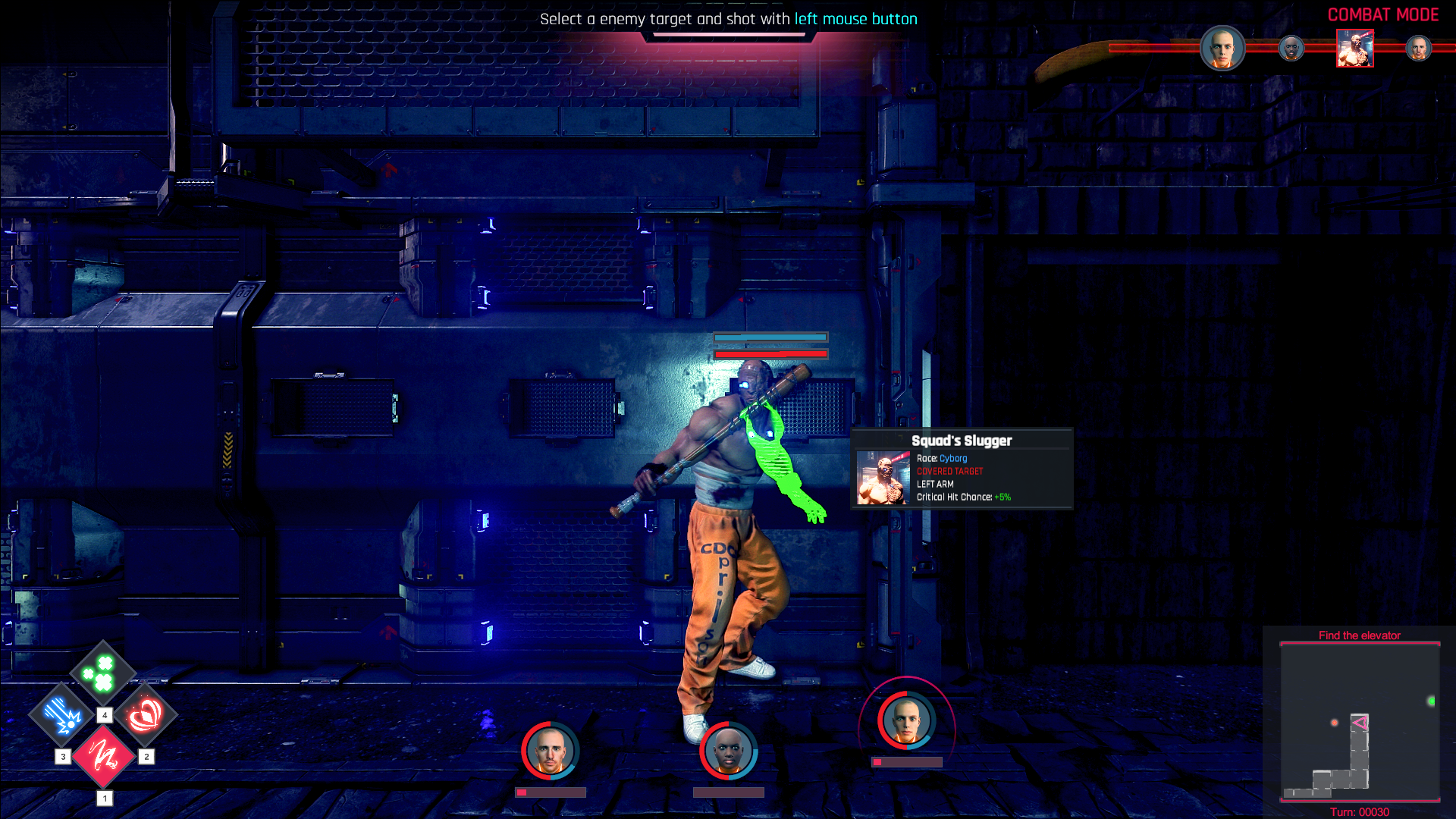
This year at PAX I was able to meet with Russia based publisher/developer 1C Entertainment, and see their catalog of upcoming games. If there’s a general theme among their upcoming releases, it’s that they seem to primarily be targeting the PC crowd and that they are delivering on titles of somewhat underrepresented genres. Here’s what I saw from the publisher.
WRATH: Aeon of Ruin
Built entirely in the original Quake engine, WRATH: Aeon of Ruin is the epitome of a throwback. Continuing the modern trend of bringing back old styles of games, but with the benefits of modern game design knowledge, Aeon plays like a spiritual sequel to the retro shooters of the 90s. This is in large part because it has been built in the original Quake engine, granting the frenetic feel of that era of shooters. You battle hordes of various monstrosities, including slow shambling corpses, floating creatures with projectiles, and giant bladed demons. Strafing is the name of the game, as your character is able to run at an absurd breakneck pace in all directions. The constant hail of projectiles forces you to dance in between this rain of fire as you return in kind with your own arsenal.
Over the course of the demo, I received an arm blade, a reliable double-barreled shotgun, a quick firing fang machinegun, and a grenade launcher that flung green orbs. Each of these weapons also came with a secondary fire, some of which were particularly useful. The melee blade, something that would be a throwaway early game tool in most games, actually doubles as a mobility tool, and by using its alternative attack you are able to launch your character forward. This can be used to charge through multiple weak enemies in a single slash, or even as an aerial dash that lets you reach areas you couldn’t otherwise.
I’m terms of emulating the appeal of old school shooters, Aeon is a complete success. Letting loose both rounds of my shotgun into a horde of shambling monsters while weaving through bullets is just as fun here as it was in Doom and Quake. The enemy variety forces you to cycle through your tools of death at a breakneck speed, switching from one to another frantically as you are encircled by these walking nightmares. In the level I played the difficulty felt fine-tuned, as I constantly just barely made it to the next health pack or armor upgrade. My only major complaint is that, in the build I played, it felt easy to get lost due to the similar nature of the environments, with corridor after corridor of grim catacombs blending together. However, I was assured by one of the developers that they intend on implementing a journal of sorts which would have important information, such as a map. All things considered, those who have been pining to return to the frenetic gunplay of early shooters should keep Aeon on their radar, as it looks as though 3D will return to their roots with this metal homage to the early days of FPSs.
Fell Seal: Arbiter’s Mark

The next title is also heavily inspired by a game franchise that started in the 90s, although this one is firmly on the opposite side of the spectrum in terms of genre. Fell Seal: Arbiter’s Mark is a turn-based strategy JRPG that evokes shades of Final Fantasy Tactics. Like other turn-based strategy games of this type, you move your characters around on a grid-based map, all the while keeping in mind enemy positioning as you march your soldiers forward. Your troops are made up of different classes, each affecting base stats as well as active abilities that can be performed during their turn.
In the encounter I played, I had a healer, wizard, rogue, battle-healer, and traditional soldier on my side. The wizard had powerful AOE blasts, the healer could mend units from a distance, and my rogue could steal from opponents. I faced off against a pack of dogs and mercenaries, thinning their ranks as I worked to block an enemy respawn point before reinforcements could be called. I attempted to position my units to flank and back-stab my opponent to deal extra damage, sometimes succeeding and sometimes overextending. While I was playing on an easier difficulty as I adjusted myself to the game, I was reassured that there are quite a few different difficulty settings, some of which were promised to challenge veterans of this type of game.
Admittedly, it’s hard to get a great sense of a seemingly deep game like this from such a small sample size, but from what I’ve seen, Fell Seal seems to demonstrate faithful adherence to the qualities that make for a good tactical RPG. While I can’t speak to details like the overall encounter design, the fairness of the AI, or the general quality of the writing, the building blocks seem quite solid here. And perhaps more importantly, the reception of the game’s Early Access on Steam has been quite positive. According to 1C, the full game should be out quite soon.
Conglomerate 451

Set in a nightmarish cyberpunk world where human clones are treated as property, Conglomerate 451 tasks the player with running a government agency that instills order through their genetically engineered army. Structured as a grid-based first-person dungeon crawler, you must use your resources to build up the ideal task force of copies so you can successfully suppress unruly members of society. In between encounters, you can use your resources earned from missions to bolster your units with new abilities or equipment. For the demo I played, I created a basic team made up of an accurate assassin, a defensive tank who could dole out shields, and a support unit capable of debuffing opponents and buffing my own team.
Once I entered the first mission I had to navigate various corridors with the ultimate goal of wiping out all hostiles in a facility. When I was confronted by the shirtless dissidents, I was thrust into turn-based combat. For each team members turn I could choose to perform one action, which included attacks such as AOE blasts, moves that caused certain ailments, or buffs that would temporarily boost a team member. Additionally, you can target certain parts of your enemies body, which have different hit rates and cause different effects depending on who you are fighting. During each turn, I felt as though there were enough options at my disposal to dramatically affect the course of an encounter. I found that against human enemies, I could use one unit to boost another’s accuracy. Then with that buffed unit, I could perform a high accuracy critical head-shot which would blast through my foes in a single move.
The complexity here comes from crafting teams with move-sets that complement one another, and then taking full advantage of these synergies in the dungeon crawling encounters. And strategizing like this will be necessary, as units can incur permanent damage over time, meaning that every fight has weight. The only majorly off-putting aspect of the game is its tone, as you are directly in command of this fascistic and dystopian regime. While the abject immorality of the premise is at least somewhat satirically presented based on the writing and the literary reference of its title, I’m sure some will find it disconcerting that you are literally directing a legion of right-less human slaves to their deaths in large droves. But if you can get past the hurdle of the premise, fans of games like Legend of Grimrock and similar titles may have a lot to look forward to when the Conglomerate 451 drops on Steam Early Access.




